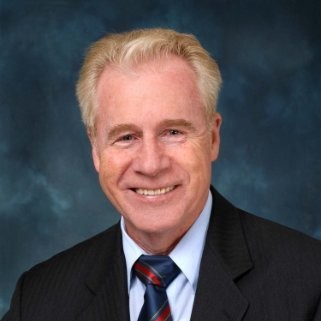
Prof Barry J Allen (10th June 1940 – 21st November 2019)
Managing Director, Medical Scitec Australia (MSTA) (1995-2019)
Professorial Fellow at four Universities (NSW, Sidney, Western Sydney and Wollongong)
Director- CERO, St George Hospital, Sydney (1994-2012)
Principal Medical Physicist Specialist- Cancer Care Centre and Clinical School, St George Hospital, Sydney
Chief Research Scientist- Australian Atomic Energy Commission (AAEC)/ Australian Nuclear Science and Technology Organization (ANSTO) (1963-1994
A life time researcher with about 400 publications in 5 research fields
With immense grief we share that Prof. Barry J. Allen, a renowned name in Medical Physics Community and past President of IOMP and AFOMP, died on 21st November 2019 in Australia. Prof. Barry J. Allen started his career at Australian Nuclear Science and Technology Organization (ANSTO) as a Chief Research Scientist in 1964 and was actively involved in research till his last days. He was born on 10 June 1940 in Australia.
I have met personally Prof. Barry Allen on many occasions during various meetings and in his office at St George Hospital, Sydney. His smiling face and jolly nature, I cherish the memories.
Professor Allen was an innovator, introducing new approaches in the use of technology to improve human health and he opened up new directions in the use of technology in medical practice with long-term impact. His demise is a great loss to the entire Medical Physics fraternity and has created a void which is very hard to fill.
Prof Allen completed his high school from Melbourne Boys High School in 1957 and went on to do B.Sc Physics and M. Sc Photonuclear Physics from the University of Melbourne (1958-1962). He joined the Australian Atomic Energy Commission (AAEC) at Lucas Heights in 1963. He became chief research scientist at the Australian Nuclear Science and Technology Organization (ANSTO) (AAEC renamed) in 1964. He married Cynthia in 1969 and moved to Oak Ridge National Laboratory (ORNL), Tennessee to study high resolution resonance neutron capture in collaboration with Dr Dick Macklin. He obtained Ph. D in resonance Neutron Capture from the University of Wollongong. He was awarded D. Sc in Resonance Neutron Physics by the University of Melbourne.
In the early 1980’s he started neutron based medical R&D programs in Boron Neutron Capture Therapy (BNCT) for cancer and In Vivo Body Composition (IVBC) for medicine. He designed the in vivo nude mouse irradiation facility at the Moata reactor at Lucas Heights, demonstrating for the first time the induction of double strand breaks in DNA arising from neutron capture induced auger emission with Dr Roger Martin of Peter MacCallum Cancer Centre. This collaborative research work ranged over physics of radiation dosimetry, boron measurements, reactor and accelerator neutron beams, chemistry of boron chemicals, proteins, monoclonal antibodies and liposome’s, radiobiology of high LET reactions and radiation oncology for melanoma and glioblastoma. He became the President of the International Society for Neutron Capture Therapy in 1988 and convened the Fourth International Symposium for Neutron Capture Therapy in Sydney in 1990.
Barry Allen designed the first human body protein monitor (BPM) fabricated by Australian Nuclear Science and Technology Organization (ANSTO) at Lucas Heights with Ned Blagojevic (1980’s). It was used initially for pediatric studies of protein change in cystic fibrosis patients with Dr Kevin Gaskin and later installed at Royal North Shore Hospital with Prof Ross Smith for collaborative clinical studies with most Sydney hospitals and continues to operate today. The BPM was an important research tool in studying the efficacy of management of many pediatric and adult diseases and treatments, including cystic fibrosis, renal disease, AIDS, cancer and surgery.
The Targeted Alpha Therapy (TAT) project, begun in 1994 at St George Hospital, was successful in developing new agents for the treatment of melanoma and leukemia, breast, prostate, pancreatic, ovarian and colorectal cancers. He designed and directed two of world’s first phase 1 dose escalation trials of intra-lesional and systemic targeted alpha therapy for metastatic melanoma, with 51 patients treated with Dr Peter Graham (Medical Director). He developed the tumour anti-vascular alpha therapy (TAVAT) concept to account for regression of solid tumours by alpha therapy, validated by micro Monte Carlo calculations with Dr Chen-Yu Huang.
High Linear Energy Transfer (LET) dosimetry is required for clinical TAT and the clinical biological dosimeter for systemic radiotherapy, based on the formation of micronuclei in lymphocytes randomly hit by alpha emissions in blood was first demonstrated with Dr Emma Song.
Barry Allen has published over 381 research articles in neutron and biomedical physics. Research topics include neutron capture gamma rays, resonance cross sections, stellar nucleo-synthesis, clinical in vivo body composition, neutron capture therapy, macro and micro-dosimetry, micro-beams, biological dosimetry and preclinical and clinical targeted alpha therapy. He was granted research funds over 4 million dollars for seven research projects titled ‘development of new contrast agents’, ‘radiotherapy – alpha emitters’, ‘body composition studies in-vivo’, ‘radiotherapy dosimetry’, ‘therapy of microscopic disease in biological relapsed myeloma patients’, ‘optimization of systemic cancer chemotherapy’, and ‘targeted alpha therapy for metastatic prostate cancer’. He co-authored the text book ‘Biomedical Physics in Radiotherapy for Cancer’ published in 2011 with Loredana Marcu and Eva Bezak.
Professor Allen was awarded Fellowships in the Australian Institute of Physics (AIP) in 1972, the American Physical Society (APS) in 1981, the Australasian College of Physical Scientists and Engineers in Medicine (ACPSEM) in 1992 and the Institute of Physics (IoP) in 1999. He was elected President of ACPSEM in 1998, Founding Vice President of AFOMP in 2000-2003 and President of AFOMP in 2003-2006, President IOMP in 2006-2009 and President of IUPESM in 2009-2012. During his tenure he introducing many new initiatives in these organizations, including the Health Technology Task Group of IUPESM to assist developing countries in the implementation of appropriate technology. He designed the AFOMP logo with Dr Kiyonari Inamura. He convened the 2003 World congress on Medical Physics and Biomedical Engineering in Sydney. He facilitated the formation of Vietnamese Association of Medical Physics (VAMP) in 2008. Professor Allen was honored by IOMP in 2013 as one of the 50 medical physicists who have made an outstanding contribution to medical physics over the past 50 years. He was honored as an Officer in the Order of Australia in the Queen’s birthday honors list 2015 for his distinguished service to biomedical physics, particularly to radiation oncology and the development of innovative methods of cancer treatment, and to international professional scientific organizations.
Professor Allen was an innovator, introduced new approaches in the use of technology to improve human health and he opened up new directions in the use of technology in medical practice with long-term impact. In his autobiographical retirement speech ‘a not so random walk through space, time and spirit’ he appealed to every young medical physicist to devote adequate research time to expand the biomedical applications of physics to bring about better therapeutic solutions for cancer treatment.
He was diagnosed with Stage III multiple myeloma in April 2015, he faced the disease with wit and charm. His demise is a great loss to the entire Medical Physics fraternity and has created a void which is hard to fill.
Prof. Arun Chougule
President AFOMP
Chair ETC IOMP

